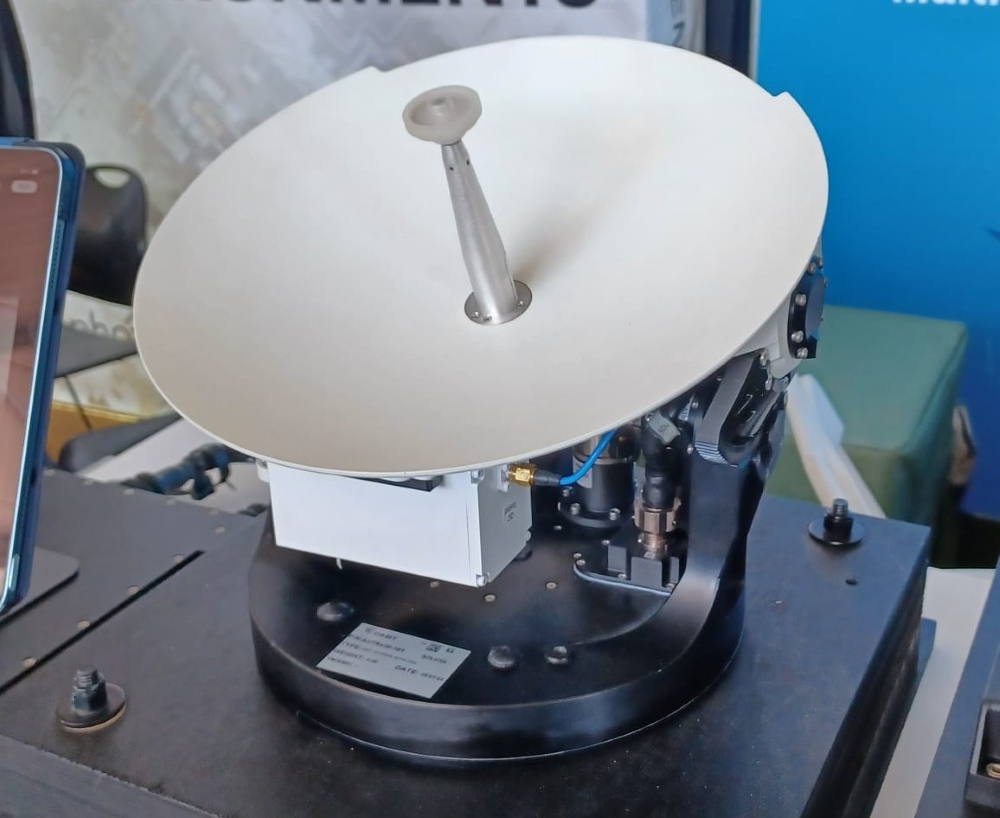
Naval forces increasingly rely on resilient, high-performance satellite communications for mission success. FW MAG met Asaf Punis, VP Global Marketing and Business Development at Orbit during the Sea Air Space conference and exhibition in the US. Asaf confirmed that Orbit Communication Systems has positioned itself as a key player in this critical defence domain, with more than 20 navies worldwide now deploying its advanced satellite communication systems for their maritime operations.
Asaf Punis stated that: “the key for a robust signal is performance, as our systems can point at satellites with an accuracy of 0.1° at Sea State 6. Such reliability and precision do not happen overnight, and we are able to deliver thanks to a 75-year stratification process of knowledge and expertise in design and engineering of satellite solutions, including stabilization as well, and always taking into great consideration all clients’ feedback.”
Indeed, Israel-based Orbit Communication Systems has been steadily expanding its footprint in the naval communications sector, with their flagship OceanTRx series gaining significant traction among premier naval forces. The company recently secured a $3 million contract with a prominent European integrator to supply its advanced OceanTRx 4MIL satellite communication systems for a NATO navy, with deliveries scheduled throughout 2025. This latest agreement adds to Orbit's impressive client roster.
The OceanTRx 4MIL represents Orbit's commitment to meeting the evolving demands of modern naval warfare. Based on the proven OceanTRx4 platform, the military-grade system supports a variety of antenna configurations, operating across Ku, X, Ka Commercial, and Ka Military frequencies. What distinguishes this system is its unique capability for simultaneous operation across multiple frequencies, enabling global communications coverage regardless of deployment theatre.
While Orbit is listed on the Tel Aviv Stock Exchange, the company has established a substantial presence in the United States over the past two decades. Their Florida-based subsidiary, operational for approximately 15 years, serves as a critical hub for production, integration, and support capabilities specifically tailored for the North American market.
This strategic positioning has yielded significant dividends, as evidenced by Orbit's recent $16.5 million frame contract with the US Air Force for the upgrade, service, and maintenance of their Airborne Digital Audio System (ADAS) communications management systems in KC-135 aircraft. The company's US facility employs around 15 personnel focused on high Technology Readiness Level (TRL) solutions for the US Department of Defense requirements.
As Asaf Punis noted during the 2025 Navy League meetings, the company's focus extends to developing smaller satellite terminals suitable for unmanned surface vessels (USVs) and other compact platforms, reflecting the changing nature of naval operations.
In fact, the naval operating environment has fundamentally transformed with the proliferation of satellite constellations in various orbits. Modern navies require systems capable of seamlessly transitioning between Low Earth Orbit (LEO), Medium Earth Orbit (MEO), and Geostationary Orbit (GEO) satellites to maintain continuous communications.
Orbit's systems address this challenge through "three axis" stabilization technology, which delivers the aforementioned reliable communications even at Sea State 6 - representing very rough sea conditions with waves of 4-6 meters. This capability is critical for maintaining the high-pointing accuracy required for satellite communications during naval operations. What distinguishes Orbit's approach is their commitment to multi-band operations. Their systems can simultaneously leverage four different frequency bands (X, Ku, Ka, Ka-military), allowing ships to connect with different satellite networks as operational needs dictate. Current systems support five different networks, with next-generation solutions planned to accommodate six.
The satellite communications landscape is undergoing rapid evolution, driven by several emerging technological trends. The shift toward Low Earth Orbit (LEO) satellite constellations is particularly significant, offering lower latency and higher throughput compared to traditional GEO satellites. This transition introduces new challenges, including more frequent satellite handovers as LEO satellites move quickly across the sky. Recent research has focused on clustering algorithms for LEO satellite user terminals to manage these transitions efficiently and reduce system signalling overhead. Additionally, the industry is grappling with security concerns specific to LEO constellations, prompting development of enhanced physical layer security schemes and more sophisticated beamforming algorithms. These technologies are crucial as navies increasingly rely on these networks for mission-critical communications.
The growing capabilities of satellite reconnaissance systems, exemplified by China's Taijing 4-03 Ku-band phased array radar imaging satellite with sub-meter resolution, further underscore the importance of secure communications for naval assets.








.png)
